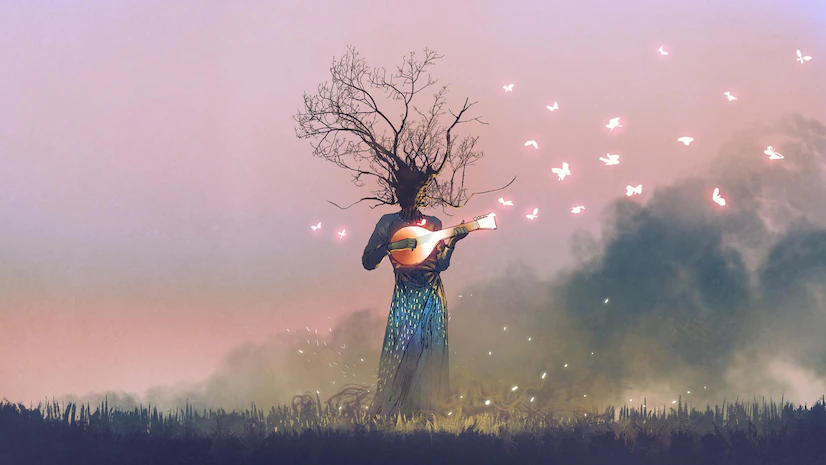Van Gogh created the distinctive, graceful accent that made his letters such a significant literary achievement, partly by immersing himself in literature.
We can view art through the eyes of an artist of his caliber thanks to his ability to articulate his enthusiasm for the work of other artists and his aims for his art in such a compelling manner, which is unusual—perhaps unique.
Early childhood established the course for Van Gogh’s love of reading, as it did for so much else in his life. His parents’ parsonage in the sleepy Dutch town of Zundert had a consistent nighttime routine that included reading a book.
Reading aloud brought the family closer together and distinguished them from the sea of illiteracy that surrounded them, far from being a solitary, solipsistic activity. Here are some french authors who inspired Vincent van Gogh with their exceptional writing techniques.
Love with Michelet
Histoire de la révolution française by Jules Michelet, the greatest of the French romantic historians, played a significant role in what would eventually become the period of van Gogh’s artistic rebirth.
The People were firmly positioned at the heart of the revolutionary dynamic by Michelet’s innovative method of writing history, which ventured to give them agency.
The faces of the People would be at the core of Vincent’s revolution in portraiture. “the female author of the most important work of the time, which was widely read and translated into all major languages before becoming the race’s Gospel of freedom,” said Michelet himself of Beecher Stowe.
What recurring motifs emerge in Vincent van Gogh’s artwork? The struggle for independence and freedom, the moral significance of literature, and the suffering of the underprivileged and needy. In times of tremendous doubt, when he rejected the “established religious establishment,” Vincent used both volumes as modern gospels.
Madame Chrysanthème
In Paris, where a wave of Japan-mania was sweeping art circles, Vincent wrote to his painter friend Émile Bernard from Provence.
A French diplomat marries a Japanese woman in Nagasaki in Loti’s tragic love story, which inspired Puccini’s Madama Butterfly. Looking at the Vincent van Gogh paintings’ names and the most stunning of his personality, Self-Portrait Dedicated to Paul Gauguin, it is clear that Vincent considered Provence “his Japan” and that Madame Chrysanthème had a profound influence on him (1888).
The eyes of the artist take on an almond form. As “a modest worshiper of the everlasting Buddha,” Vincent van Gogh drawings describe him as a Japanese monk.
Bel-Ami
Vincent “wrote,” with his brush as Emile Zola “painted” with his pen. Zola wrote realistic tales like “L’Oeuvre” (1886). He characterized life as harsh and straightforward in the miner’s villages and slums of Paris.
It is clear from the famous van Gogh paintings list that just like Zola, Vincent sought to portray everything he observed around him accurately. This included the agricultural workers, the old guy who had seen better days, the depressed or working ladies, the soup kitchen, a tree, the dunes, and the fields.
The book Bel-Ami, which dominates Van Gogh’s Still life with plaster figurines and influenced the van Gogh paintings list, is mentioned in a letter Vincent addressed to his sister Willemien from Paris about Maupassant’s “masterpiece.” Vincent offers his “little” sister some reading recommendations, including some of the most well-known French naturalist writers like Émile Zola, Edmond De Goncourt, and Guy de Maupassant, whose works he had collected in Piles of French Novels.
The protagonist George Duroy, who is well-liked by the Parisian women of the beau-monde, is known as Maupassant’s Bel Ami. He advances socially by using his accomplishments. However, Vincent jokes to his brother Theo from Arles, “I’m not enough of a Bel Ami for that,” about his difficulty persuading the women of Provence to serve as his models.
Charity with Dickens
Dickens was another french author who inspired some of the most famous Vincent van Gogh artwork with his exceptional writing techniques. The vicarage in the Nuenen hamlet where Vincent van Gogh’s parents resided in this building. Vincent’s parents pushed him to read for his personal growth.
When he was younger, Vincent enjoyed reading moralistic novels, which were popular among Protestant Christians and emphasized the value of compassion and kindness. These principles are also central to Dickens’ writing. Throughout his life, Vincent read and reread books by Charles Dickens.
Vincent turns to his favorite British novelist, Charles Dickens, “one of those whose characters are resurrections,” for comfort through the worst periods of his life while self-exiled at the institution in Saint-Rémy-de-Provence. He revisits Dickens’ Christmas Books and Beecher Stowe’s work in the spring of 1889. H
Vincent’s remarkable artistic development over ten years. If you look at the list of Vincent van Gogh paintings’ names, you will find that a portion of the energy and creative tension that permeates his paintings may be in his enthusiasm for reading.
Humour with Daudet
In 1888, Vincent moved to Arles in the South of France and found that he needed to study sarcasm and humor to improve the Vincent van Gogh drawings. He read Alphonse Daudet’s “Tartarin de Tarascon” (1887), a humorous caricature of the Frenchman from the South.
Vincent might relate to this farce’s portrayal of life in southern France. But, according to Vincent, there wasn’t much encouragement in his day, and the only thing that might offer solace was art.
Conclusion
Even in the most distant regions of the globe, people are familiar with Vincent van Gogh’s paintings, yet his tragic life narrative sometimes hides the depth and complexity of his creations. By focusing on the books Vincent loved and highlighting literature’s significant influence on his life and career, I try to retell this tale in Vincent’s Books.
Vincent was a voracious reader who could read in several languages and could not live without books. His reading preferences throughout his troublesome life mirrored his many personae—art dealer, preacher, painter—and were motivated by his drive to learn, talk, and discover his means of contributing to humanity.
Additionals:




























